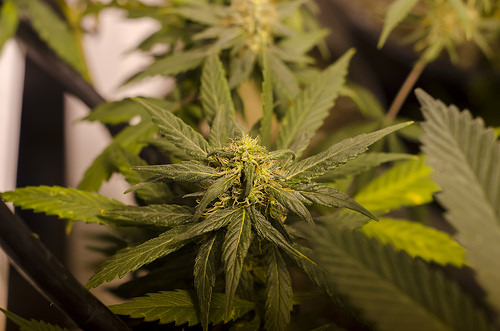Marijuana linked to higher car fatality rates
The number of fatal car crashes involving marijuana use tripled between 2000 and 2010, according to a recently released Columbia University study. As MSN reports, researchers ran toxicological investigations on almost 24,000 vehicle fatalities, finding that use of the drug “played at least some role” in twelve percent of fatalities. This study, along with a handful of others, pose implications for both safety and for the growing movement to legalize marijuana.

Debates over weed have intensified since Colorado legalized it, but some long-term car safety data indicates trouble. From Brett Levin Photography.
Additional research poses questions regarding marijuana use and its effect on a particularly dangerous group of drivers: young people. A 2010 NHTSA study, for example, found that one in eight high school seniors said that they had driven after smoking weed, and other federal data reveals that almost 50% of drivers fatally injured in a crash who tested positive for weed were under age 25.
Another study by the National Institute on Drug Abuse and published by the New England Journal of Medicine earlier this month discovered that marijuana may not only impair teen drivers’ ability but also lower their IQ. Weed use isn’t entirely uncommon among drivers of all ages: One NHTSA study found that four percent of drivers were high in the daytime; six percent were found to be high at night. On weekend nights, that percentage more than doubled, reports USA Today.
The National Institute on Drug Abuse and NHTSA are currently wrapping up a three-year-long study on the impact of “inhaled marijuana” on drivers’ performance, charting study participants who receive a low dose of THC (marijuana’s active ingredient) as well as those who receive a placebo, to study the drug’s impact on “decision-making, motor control, risk-taking behavior and divided-attention tasks,” reports USA Today.
Out on the road, it can be difficult to test for marijuana use. As the New York Times reports, the field test for impaired driving nabs eighty-eight percent of those tested who are under the influence of alcohol, but, in one study, the field test caught only thirty percent of those under the influence of THC. Plus, a debate rages on about how to prove that THC-influenced drivers are too impaired to drive. “Blood-alcohol content can be reliably tested on the side of the road with a Breathalyzer, and ample data link rising levels of blood alcohol to decreases in driving skills. The same is not true for marijuana.”
THC levels are measured from blood or urine samples, often collected hours after an arrest. THC can appear in tests days or even weeks after the driver last smoked, which makes it difficult to determine a driver’s level of impairment at a certain time. “Yet most states have laws that equate any detectable level of THC metabolite in urine with detectable levels of actual THC in blood, and criminalize both,” reports the Times. Six states currently maintain limits for THC concentration in blood.
The recent studies come at an especially significant time, as the federal government is reconsidering its stance on marijuana as a hard drug and weighing its medicinal benefits. In one case, the state of Colorado legalized medical marijuana clinics in 2009, and has since witnessed a rise in driving fatalities in which only marijuana was involved. As the movement to legalize weed gains steam, the government — and anyone who shares the road — will face critical questions about how to measure driver impairment and “soft” drugs.
Category: Road safety, Traffic law
















